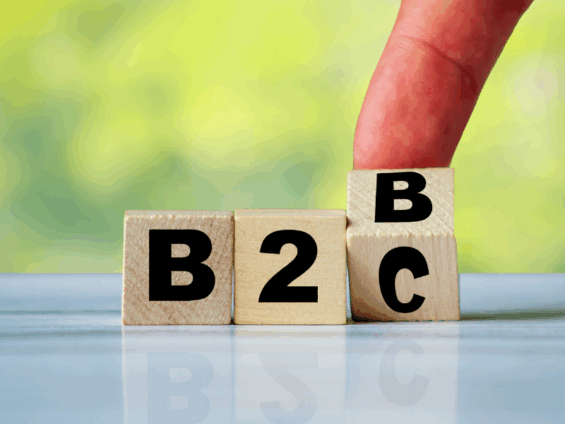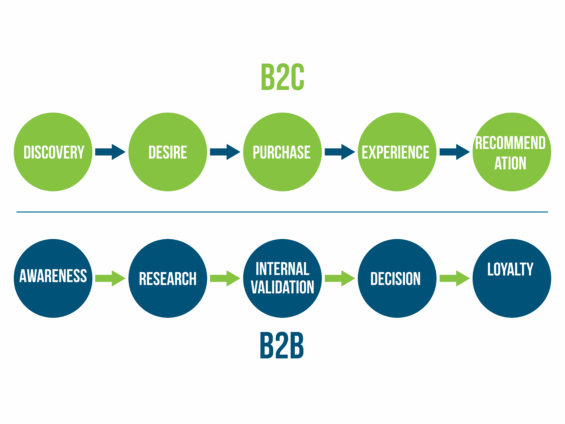B2B vs. B2C: How to Align Your Marketing Strategy with Your Business Reality

Understanding the Distinction Between B2B and B2C
B2C marketing (Business to Consumer) targets individuals directly. The buying process is often faster than in B2B and may be influenced by emotions, desires, immediate needs, or practical considerations like price, convenience, and product quality. Communication typically focuses on clarity, ease of use, and creating a personal connection through relevant experiences.
B2B marketing (Business to Business), on the other hand, targets organizations. Buying decisions are generally more complex, often made collectively, and based on criteria such as performance, reliability, ROI, and long-term impact. The sales cycle is usually longer, and relationships tend to be more strategic and partnership-driven.
That said, it’s important to remember that all buying decisions, whether in B2B or B2C, are emotional to some degree. People buy with their hearts and justify with their heads. The main difference between the two models is not about rationality, but about the complexity of the decision-making process, including the number of people involved and the structure of the buying journey.
What this means in practice
Addressing an individual requires a very different approach from presenting a solution to a business. Tone, level of detail, content formats, and channels must all be tailored to the audience’s reality.
Many B2B companies mistakenly borrow B2C tactics, relying on catchy but vague slogans or campaigns that fail to match the realities of their sales cycle and decision-making process.
Conversely, some B2C businesses come across as overly technical or distant from the real user experience.
However, precision isn’t exclusive to B2B. Some B2C purchases, especially high-ticket or complex ones, require a great deal of clarity and trust. Similarly, some B2B decisions, such as buying office supplies, can be emotional, fast, and based on human connection.
The key is to understand your audience’s needs, behaviours, and expectations and adapt accordingly.
A real-world comparison: A professional training company
Take, for instance, a company specializing in continuing education.
- On the B2C side, it markets directly to professionals looking to improve their skills on a personal level. The messaging emphasizes career development, flexibility, self-paced learning, and affordability. It speaks to the individual benefit: get promoted, stand out, or upskill quickly.
- On the B2B side, the same company targets HR or managers within SMBs or large enterprises. The message focuses on team upskilling, talent retention, organizational performance, and strategic alignment. The buying process is longer, involves multiple stakeholders, and requires proof of results.
In both cases, success depends on well-defined personas, a clear understanding of the customer journey, and a tailored communication Strategy for each segment.

Rather than just asking “Am I in B2B or B2C?”, a better approach is to ask:
Who am I actually speaking to?
- How many people are involved in the decision, and what are their roles?
- What’s the price point and perceived risk of making the wrong choice?
- How central is this product or service to the user’s daily life?
- And most importantly: how can I structure my marketing efforts to support the company’s broader strategy?
A helpful tool here is the BANT method:
- Budget : what is the investment capacity?
- Authority : who makes the decision?
- Need : what is the real problem or need?
- Timing : is it an immediate need or a project in the planning phase?
Shifting toward a more focused, tailored strategy
The line between B2B and B2C is often blurrier than it appears. Many businesses operate in both worlds. For example, those selling to consumers and distributors alike. Ultimately, the real differentiator isn’t the label on your business model, but how well you understand your specific context, market realities, customer expectations, and key drivers of growth
A clear, structured, and realistic approach is what sets apart companies that use marketing as a growth engine rather than just a set of tactics.
Category
Share

